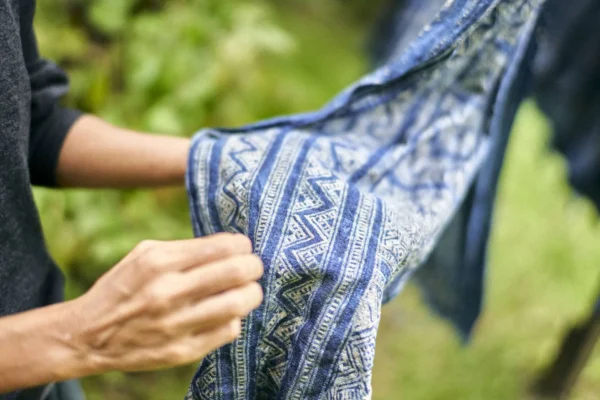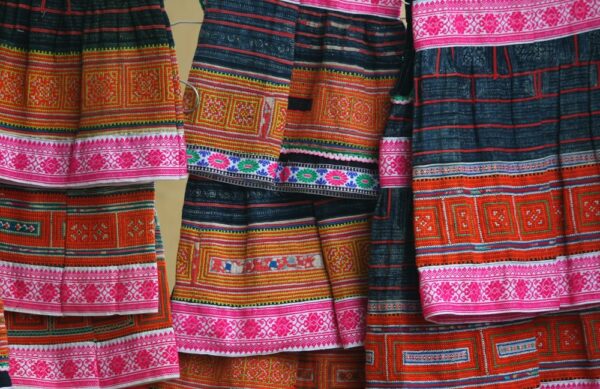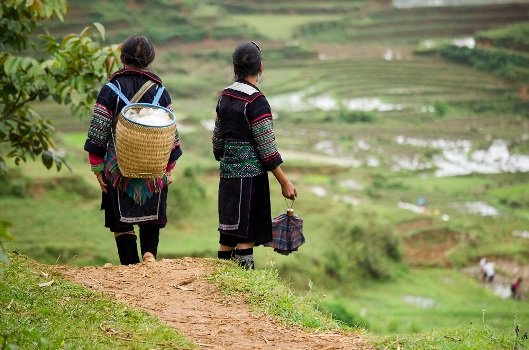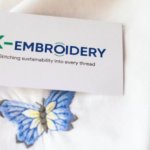7 Simple steps to buying traditional Hmong Clothes and Textiles
Reference: This article was inspired by the post “The traditional costumes of the Hmong people” by Nguyen Thi Minh Anh. Posted on vietheritage.net on March 20, 2022
Hmong people are easily spotted by their colorful handmade outfits, from embroidered hats to handwoven baby carriers. As the Hmong don’t traditionally have a written language, textiles have become a form of visual expression. Fabric motifs are often inspired by nature, such as snail shells, animal teeth, ferns, seeds and even cucumbers!
The Hmong people are recognizable for their bright, detailed dress, much of which is readily available to buy as souvenirs. We share 7 simple steps to buying traditional Hmong clothes and textiles that benefit both you and the Hmong community.
The Hmong are an ethnic group that are thought to originate from the plains of Tibet and Mongolia, moving southwards through China. Nowadays, they are known to live in the mountainous parts of China, Vietnam, Laos and Thailand.

If you’re visiting Sapa in Vietnam or Luang Prabang in Laos, you’re likely to meet groups of persuasive Hmong women selling their wears with vigor. It’s easy to be overwhelmed with so many options of souvenirs in every possible color, but these unique items are well worth the effort. Curious how to get started? Check our these simple steps to buying Hmong textiles, plus tips on how to get the best and most authentic textile keepsakes.
STEP 1: FIND YOUR RELIABLE SELLER
In most cases, you won’t have to search out Hmong sellers, they will proactively approach you! However, it’s important to be aware of who exactly you are buying from. There are a variety of subgroups of Hmong people across Southeast Asia, from the ‘Flower Hmong’ in Vietnam to the ‘Hmong Du’ in Laos.
Most Hmong subgroups will speak entirely different languages, from both their home country and each other, and offer completely different styles of textiles. There are a vast array of cultures and backgrounds which add to the uniqueness of your souvenirs. Don’t miss the opportunity to learn who you are buying from while you have the chance!
Fact: In Laos alone, there are three subgroups of Hmong; the Hmong Dao (White), Hmong Du (Blue) and Hmong Djua (Striped). There are more subgroups of Hmong across Southeast Asia, and the group that you visit will determine the pattern and style of textiles you are offered.
STEP 2: KNOW YOUR FABRICS
Hmong textiles are made from a variety of raw materials, such as cotton, hemp, banana fiber, mulberry fiber and silk. Each of the materials have slightly different qualities, from soft and flexible cotton to satin-like banana fiber, though all tend to be natural, comfortable and durable. The best way to find out more about Hmong fabrics is simply to ask the seller lots of questions.

Perhaps more important than choosing which fabric you want is appreciating the time and effort that goes into making them. Each material requires a slightly different process to create, but most require collecting the raw material before spinning, dying, weaving and sewing.
For example, making hemp fiber for the Hmong loom is an extremely long process. The hemp plant grows for about 2 ½ months before it is harvested. The leaves are then stripped away and the stalks are dried for 15 days before being peeled. Next the peeled stalks are twisted together and pounded to make them softer. Finally, the fibers are spun into skeins of thread, washed in ash water and wound into a ball. The arduous process can take over 3 months before any weaving actually begins!
Fact: A traditional Hmong skirt can take up to 4 – 6 months to make. This includes harvesting from the fields, spinning, weaving, designing the pattern, wax printing, dying, embroidery and applique.
STEP 3: UNDERSTAND THE PATTERNS
Traditionally, Hmong people only made textiles for personal use. Clothes were made for both everyday use and special occasions, such as weddings, funerals and the new year. Since the Hmong didn’t have a traditionally written language, the motifs and patterns on these textiles were often used as a form of expression. Especially before each new lunar year, Hmong women would design garments with meaningful symbols that they would like to be part of their life in the coming year. This tradition is still followed today and women’s hopes for the future can often be seen worn on the cuffs of their sleeves.
Fact: The ‘fish hook’ symbol is often used by young women who would like to attract a husband. Whereas, the ‘chicken foot’ symbol is used by elderly people in relation to the spirit world.
STEP 4: PICK YOUR ITEM
Hmong textiles are not just for souvenirs, but very much a part of everyday life for the Hmong. As a result, there are few items of clothing that cannot be found for sale. Trousers, shirts, jackets, head scarves, hats, bags and belts can all be found hanging up at markets.
In more recent years, some of the Hmong people adapted their embroidery to Western audiences. Clothing of more muted colors, tapestries and ‘story cloths’ filled with war stories can also be found. Some traditional clothing pieces have also been adapted to the taste of tourists. For example, square waist bands worn by Hmong women are often turned into pillow cases, table cloths and wall hangers.
In short, there is truly no end of choice! Look around and find things that you will wear or keep in your house. There’s both traditional, colorful items and contemporary, low-key goods.

Tip: Don’t say ‘maybe’ if the answer is ‘no’. Many tourists think it’s impolite to simply say no but, in actual fact, many Hmong sellers would rather just be given an honest answer. They are often on their feet, tirelessly selling all day, and would much rather not waste their time on those who are not interested.
STEP 5: SETTLE ON A PRICE
Find a price that works for both you and your seller. Contrary to what many people think, heavy bargaining is not appreciated. Some items may be more expensive than you originally expect but keep in mind that some of the products will have taken months to create.
Handwoven products are much more expensive than machine-woven products but they are often higher quality and much more authentic. Each handmade piece has a story and a skilled producer behind it — making it truly one-of-a kind. The technique has been handed down through generations. However, with each generation, there are less willing to take the time to learn it properly. By purchasing products that are made following these traditions, you’re not only providing immediate incomes to families now, but also reinforcing to future generations that this is a valuable source of income and a worthwhile skill to learn.

Although handwoven products cost more, buying them promotes the continuation of traditional Hmong textiles. Voting with your dollar will ensure Hmong people can continue to make a living from skills passed down through generations.
Tip: A simple method to discern whether an item is handwoven is by examining the back of the material. If you notice any visible hand-stitching or subtle imperfections, the item was probably crafted by hand.
STEP 6: LEARN MORE
Behind the intricate beauty of Hmong textiles lies a rich history and painstaking process that often goes unnoticed. Arguably, the history and process behind these textiles are just as beautiful as the items themselves. One of the most immersive ways to explore this world is by participating in a workshop. There’s all sorts of opportunities to get hands on, from batik classes in Vietnam to a dying workshops in Laos.
Fact: Among the distinctive textiles of the Hmong culture is batik, a resist dye technique featuring intricate white motifs crafted with beeswax. Artisans employ bamboo pens equipped with metal nibs to meticulously apply the wax onto hemp fabric. When the cloth is immersed in an indigo pot for dyeing, the areas marked with wax resist the dye, resulting in a contrasting pattern. To achieve the rich, deep shades of blue characteristic of batik designs, the cloth undergoes dyeing processes upwards of 20 times, spanning a duration of two weeks.
STEP 7: KEEP THE TRADITION GOING

Keep the tradition alive by proudly wearing your Hmong textiles and sharing their beauty with others, whether through personal anecdotes or by showcasing pictures. Word of mouth can significantly contribute to increasing demand for authentic, high-quality Hmong textiles. Additionally, supporting the creation of these textiles can be done by donating to Hmong villages or participating in textiles workshops. Your contributions help sustain this rich cultural heritage and ensure its continuation for generations to come.


